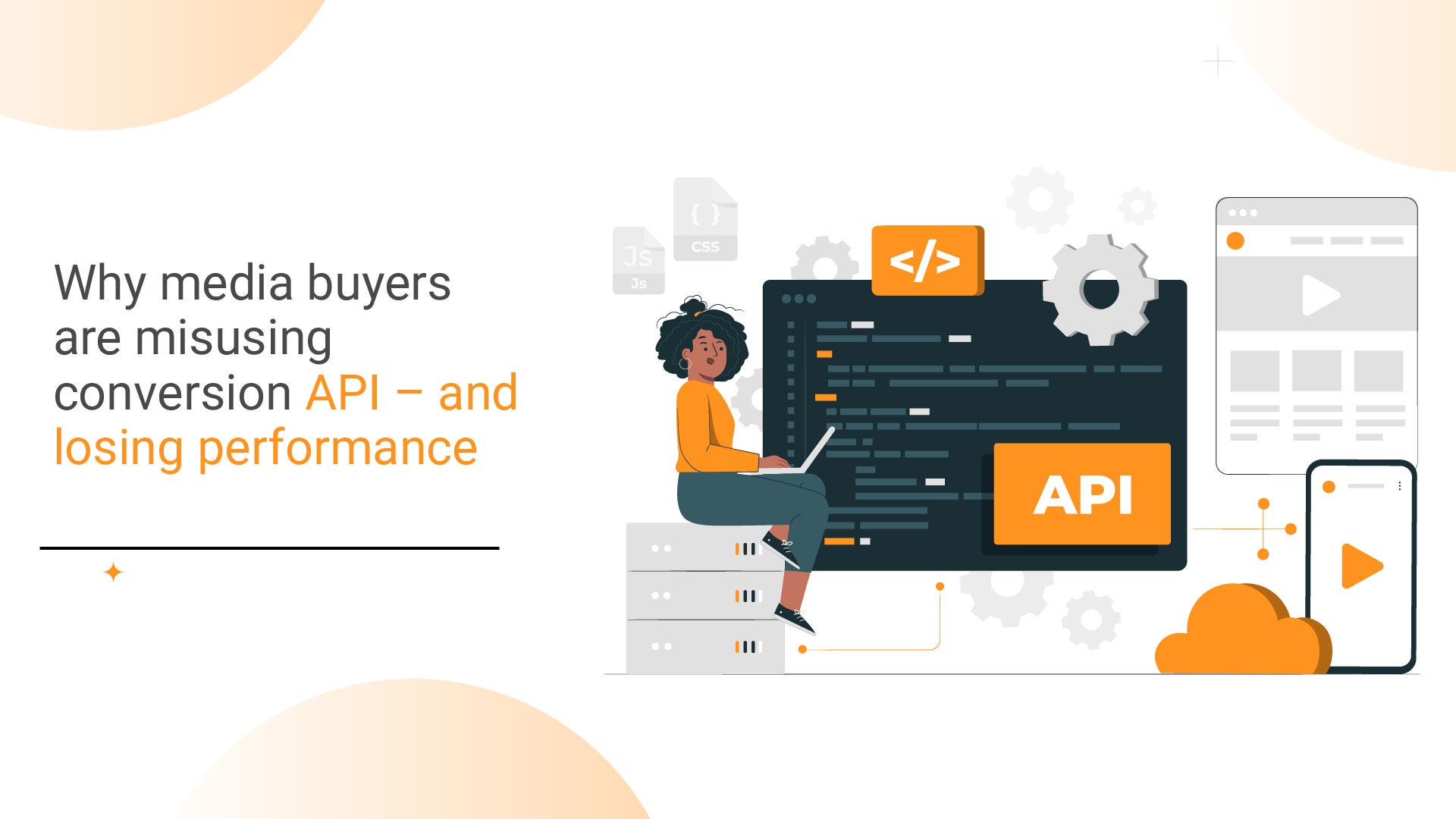

digital transformation marketing
Why media buyers are misusing conversion API – and losing performance
Why media buyers are misusing conversion API – and losing performance
Several years into a fundamentally changed media-buying landscape, many people still don’t understand what’s really driving digital marketing data.
Let’s take Meta as an example. Digital media buyers are well aware of both Conversion API and Facebook Pixel, two methods which Meta uses to track user behavior on its ads. Pixel came first, and tracks page views, button clicks, and other browser-side events. The data it provides is meant to help businesses improve and optimize their campaigns, then determine overall effectiveness through metrics. It’s the industry standard.
Conversion APIs were introduced by major Ad Network in response to the blocking of 3rd party cookies and transition toward 1st party data. In fact, Conversion API can replace Pixel, but it works best when combined with Pixel on a campaign. But more than that, it must be used. Despite what many digital marketers think, Pixel is no longer enough, and Conversion API is absolutely necessary for proper optimization of their campaigns.
Conversion API: not a bonus but an essential
Across the digital marketing industry, there’s a basic misunderstanding of what precisely Conversion API does. It’s not just for reporting campaign performance, although that’s certainly one of its key functions. Marketers who assume Pixel’s reporting tools are sufficient are missing out on a huge opportunity to get better results from their ad platforms.
One wrongheaded perception within digital marketing is that Conversion API is an add-on solution, not an essential commodity. In reality, Conversion API is the foundation of proper media buying in 2025. Running paid ads absent Conversion API implementation is tantamount to throwing money away.
Considering the scale of Facebook ads (and Snapchat ads, X ads, etc.), this means millions of dollars are being wasted on paid ads that rely only on Pixel, and thus lack a strong Conversion API foundation. Pixel just can’t provide comparable data quality on the same ads. The best strategy is always to keep Pixel and use it in combination with properly-implemented Conversion API.
Conversion API isn’t just about seeing data in the Ads Manager and managing campaigns. This is a common misconception. It’s actually about helping an ad platform understand who your customers are, which enables its algorithm to find more people like them. By using Conversion API, you’re putting the full strength of the platform’s algorithm into your customer targeting. It’s about more than information and reporting. Marketers miss this at their own peril.
Still, it needs information to work. The better you explain your customers to Meta through the API, the better Meta can do its job. Pixel depends on third-party data, which was fine in a digital marketing landscape that did too. It no longer does. The shift toward first-party data collected directly by the company has made Pixel insufficient on its own. Simply put, this means the more data marketers give a platform through Conversion API, the better it works.
Miscommunication and misrepresentations
Why the knowledge gap here? To some extent, it has proven difficult for the big social media giants like Meta to effectively communicate the essential nature of Conversion API to the millions of digital marketers worldwide who use it. This is tricky, too, because the message is not to tell digital marketers to get rid of Pixel (which they know and like) and replace it with something new. The message is to use it in combination with the Conversion API.
The lack of understanding we see on the marketer side is only multiplied by Conversion API’s perceived technical complexity. The tool can feel opaque, and its benefits are not always immediately obvious. Marketers see their Conversion API score and figure it’s good enough, not realizing how major an improvement of just 1.5 points could be.
In other words, marketers think they’re score is fine, and don’t feel any urgency to fine-tune and improve it since it’s already technically working. The data flows, the ads run, and everyone’s happy—and no one realizes they’re missing out on an enormous performance improvement with just a few small adjustments.
Pooling the data and turning on the jets
Activating Conversion API isn’t like turning on the tap, exactly. It’s the faucet itself, and only a powerful and useful one if it has enough of a reservoir of data to pull on. Let’s say your Meta attribution shows 50 conversions out of 100 total purchases. If you send all the conversion data to Meta, instead of just the 50 that are attributed directly to it, you double the information that Meta can use to train its algorithm and optimize delivery. You double the size of your reservoir.
But digital marketers are, by and large, only sending the data related to the 50 conversions that Meta made. This is a misunderstanding of what Conversion API does, and it’s a stumbling block of enormous proportions when blown out to the major social platforms. The bigger the blind spot, the bigger the stumbling block.
Conversion API works extremely well. The struggle to get ad buyers to use it properly isn’t just bad for individual campaigns but for the industry at large. Remedying this problem will make ads better, data reservoirs better, and the industry better—and there’s virtually no reason not to.
Get in touch with our MarTech Experts.

Vlad Zhovtenko
Vlad Zhovtenko is the CEO and co-founder of RedTrack, the AI-driven analytics and automation platform for media buyers. He has been an active player in the digital advertising space since 2000, and has held multiple marketing and managing director roles in the industry. Beginning in 2008, Vladyslav worked as an independent consultant and advisor to companies seeking to improve their lead generation and ad tech, helping them create comprehensive digital sales and marketing strategies and establish relevant processes for sustained growth. He co-founded AdxGeeks in 2015, which provided programmatic media-buying solutions through a white-label DSP SaaS program, then co-founded RedTrack in 2019 to make digital marketing analytics & automation more accessible to SMEs and to help media buyers to make smarter decisions and easily scale campaigns for revenue growth




